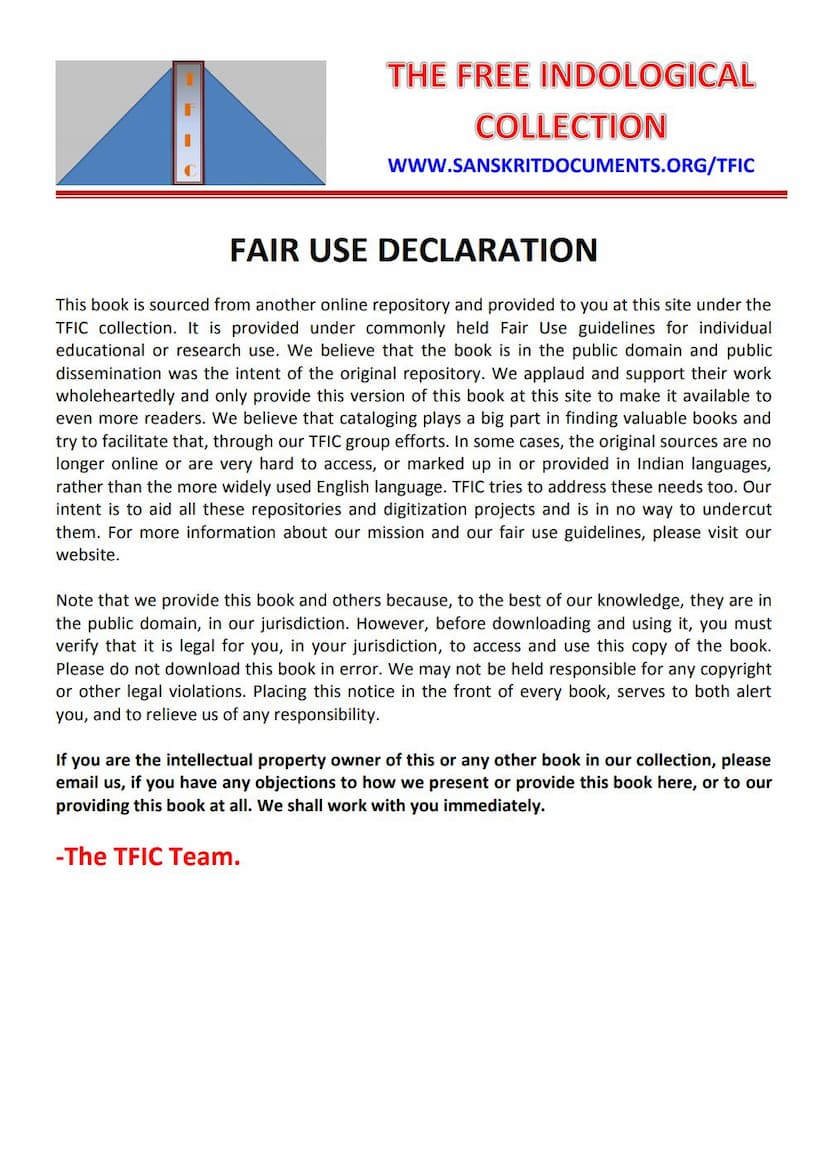Mahavira Charitam
Added to library: September 2, 2025

Summary
Here's a comprehensive summary of the Mahavira Charitam by Acharya Gunachandrasuri, based on the provided text:
Book Title: Mahavira Charitam (also referred to as Sri Vir Charitra) Author: Sri Gunachandrasuri Publisher: Devchand Lalbhai Jain Pustakoddhar Fund, Bombay Language: Prakrit (Prākritam) Year of Publication: A.D. 1929 (Vikram Samvat 1984) Series: Shreshthi Devachand Lalbhai Jain Pustakoddhara Series, No. 75 Number of Copies: 1250 Price: Rs. 4-0-0
Overall Nature of the Text:
The Mahavira Charitam is a biographical account of the life of Lord Mahavira, the 24th Tirthankara of Jainism, composed in Prakrit. It follows the traditional narrative structure of Tirthankara biographies, detailing his numerous lives and spiritual journey leading to his ultimate liberation. The text is extensive, spanning 11 parts (Prastavas) as indicated by the table of contents and further elaborated in the introductory sections.
Key Figures and Lineage:
The text emphasizes the lineage of the author and his spiritual predecessors. Acharya Gunachandrasuri was a disciple of Sri Sumativachagasuri and a follower of the Chandrakulin lineage. His teachers were prominent Jain scholars and saints like Acharya Prasannachandra, Acharya Jinachandra, and Acharya Abhayadeva, who themselves were disciples of esteemed figures like Acharya Jineshwar Suri and Acharya Vardhamana Jineshwar Suri. The text also mentions other significant figures like Acharya Hemachandra and Acharya Nemichandra.
Purpose and Style:
The author, Gunachandrasuri, states that while Tirthankara biographies by scholars like Hemachandra and Nemichandra already exist and are beautifully rendered, his work aims to provide a detailed and comprehensive account. The language used is Prakrit, specifically noted as being accessible to women and children, and understandable to those who appreciate Prakrit literature. The text aims to enlighten the readers about the life and teachings of Lord Mahavira.
Content Structure (Based on the Table of Contents):
The text is divided into eight main sections (Prastavas), each covering different aspects of Mahavira's life and the spiritual path:
- Upodhāta (Introduction/Preface): Discusses the significance of the text, the author's lineage, and the historical context of its composition. It also addresses and refutes certain claims made by the Kharatara Gachchha regarding Mahavira's life, particularly the concept of "Garbhāpahāra" (transfer of the embryo).
- Vinītā Varnanam (Description of Vinita): This section likely details Mahavira's life in the celestial realm or a significant past life before his birth as Mahavira. It covers the lineage of Rishabhanatha and the early lives of Mahavira.
- Prīyamitra and Marichi Jivan (Lives of Priyamitra and Marichi): This part focuses on Mahavira's past lives, including his time as Priyamitra Chakravarti and his ascetic life as Marichi, who faced numerous challenges and temptations. It details his births and the development of his spiritual understanding through these experiences.
- Hitur Varnanam (Description of Hitur): This section seems to continue the narrative of Mahavira's past lives, possibly detailing his birth and early life as Nandan, and his renunciation. It covers significant events like his conception, birth, and the auspicious dreams.
- Shreshthi Jivana (Life as a Merchant): This part narrates the story of Yasas, who took diksha and experienced hardships. It likely highlights the consequences of past actions and the spiritual progress made through tapas.
- Goshala-Nigraha (Subduing Goshala): This section is dedicated to the interactions between Mahavira and his contemporary, Goshala Mankhaliputra, an infamous antagonist. It details Goshala's misleading teachings and Mahavira's efforts to counter them, including Goshala's eventual downfall and the narrative of his past lives.
- Sangama-upasarga (Afflictions of Sangama): This part describes the trials and tribulations faced by Mahavira, particularly the obstacles created by Sangama, who tried to test Mahavira's resolve through various means. It highlights Mahavira's spiritual fortitude and unwavering commitment to his path.
- Nirvana Kalyanam (Liberation): This final section culminates in the description of Lord Mahavira's ultimate spiritual attainment, his omniscience (Kevala Jnana), his final sermon, and his liberation (Nirvana).
Key Themes and Theological Points:
- Karma and Rebirth: The text strongly emphasizes the law of karma, illustrating how actions in past lives influence present circumstances and future destinies. Mahavira's numerous lives serve as examples of this principle.
- Ahimsa (Non-violence): The core of Jain philosophy, Ahimsa, is implicitly and explicitly promoted throughout the text, particularly in Mahavira's teachings and his own practice of extreme non-violence.
- Renunciation and Asceticism: The narrative highlights the importance of renunciation (tyaga) and rigorous asceticism (tapas) as the primary means to overcome karmic bondage and achieve liberation. Mahavira's own life and the lives of his disciples exemplify this.
- Right Faith, Knowledge, and Conduct (Samyak Darshana, Samyak Jnana, Samyak Charitra): The text underscores the path to liberation through the triad of Right Faith, Right Knowledge, and Right Conduct, as taught by Mahavira.
- Countering Misleading Teachings: The text addresses and refutes the erroneous doctrines of figures like Goshala Mankhaliputra, emphasizing the purity and correctness of Mahavira's teachings.
- The Power of Faith and Devotion: The narrative showcases how devotion and unwavering faith in the teachings of the Tirthankaras lead to spiritual progress and ultimate salvation.
Historical and Scholarly Context:
The preface mentions the historical context of the text, placing its composition within the 12th century Vikrama era (1139 VS, implying A.D. 1182). It also engages with controversies surrounding the Kharatara Gachchha, particularly concerning the concept of "Garbhāpahāra" in Mahavira's life, refuting their claims based on scriptural evidence. The text also acknowledges the contributions of previous Jain scholars and their works.
Overall Significance:
The Mahavira Charitam serves as a devotional and educational text for Jains, offering a detailed and inspiring account of Lord Mahavira's life. It aims to instill faith, promote ethical conduct, and guide individuals on the spiritual path toward liberation. The detailed narrative of Mahavira's past lives and his ultimate triumph over suffering provides a profound example of spiritual dedication and the power of right conduct.